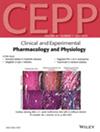Anatomical Classification and Clinical Significance of Right Middle Lobe Vein Confluence Variations in Right Upper Lobectomy: A Three-Dimensional Reconstruction Study
Abstract
Background
Anatomical variations of the right middle lobe (RML) veins pose significant risks during video-assisted thoracoscopic right upper lobectomy (RUL), where unrecognised veins traversing the horizontal fissure may be injured, compromising venous drainage. While 3D reconstruction aids surgical planning, a comprehensive classification system for RML venous confluences was lacking.
Methods
This retrospective cohort study analysed 2007 patients undergoing lung surgery (2017–2023) using preoperative CT-based 3D-CT bronchography and angiography (3D-CTBA; Mimics 21.0). Two thoracic surgeons independently classified RML veins (V4a, V4b, V5a, V5b) by drainage location: horizontal fissure (H-type), anterior mediastinal (A-type), or oblique fissure (O-type). Disagreements were resolved by a radiologist. Descriptive statistics characterised anatomical patterns.
Results
Analysis revealed complex venous drainage, with 31.83% (n = 639) demonstrating clinically critical H-type variations (confluencing into horizontal fissure). These were subclassified as HA (30.69%), HO (0.34%), and HAO (0.79%) patterns. V4a* traversed the fissure most frequently (29.07%), draining into upper lobe veins (V3b, V3a, V2c), while V4b* (2.86%) and V5a* (5.50%) exhibited lower traversal rates. No V5b* traversed the horizontal fissure. Rare drainage into the inferior pulmonary vein (IPV; V4a: 2.59%) or left atrium (0.20%) was observed, and the two-branch venous pattern predominated (42.87%). Previously unreported variants included downward-displaced RS3 (n = 10) and V6 → superior pulmonary vein drainage (n = 2). Intraoperative validation confirmed 3D-CTBA classification accuracy.
Conclusions
This large-scale study establishes the novel HAO classification system for RML venous anatomy, revealing a high prevalence (31.83%) of H-type variations that critically impact RUL safety. Preoperative 3D-CTBA using this framework enables tailored surgical strategies to preserve RML veins traversing the horizontal fissure, reducing injury risks and postoperative complications.

 求助内容:
求助内容: 应助结果提醒方式:
应助结果提醒方式:


